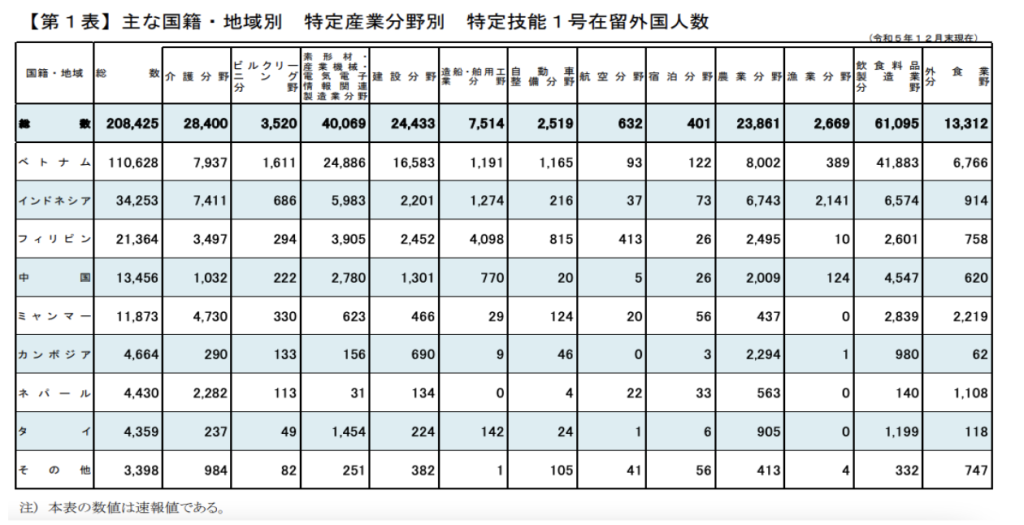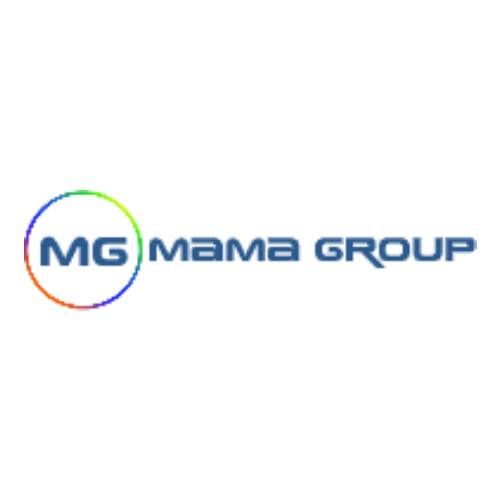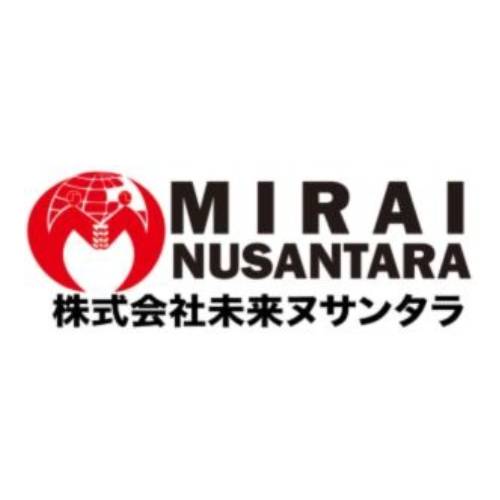The ‘Specified Skilled Worker’ residence status, newly established in April 2019, has seen a steady increase in numbers since the start of the program. It is gaining attention as a residence status that allows employment in blue-collar jobs. Did you know that Japan divides the Specified Skilled Worker status into SSW1 and SSW2, each with distinct characteristics and target fields?
In this article, we will explain in detail the differences between SSW1 and SSW2, as well as how to obtain them.
Table of Contents
1.What is a Specified Skilled Worker?
2.Overview of SSW1 and SSW2
- Details of SSW1
- Details of SSW2
3.Differences Between SSW1 and SSW2
- Difference in the Maximum Length of Stay
- Difference in Requirements for Permanent Residency
- Difference in Skill Level
- The Necessity of Support for Foreign Workers
- Can Foreign Workers Bring Their Families?
- Japanese Language Proficiency Test: Yes/No
- Differences in Exam Implementation
4.How to Obtain SSW1 and SSW2
- How to Obtain SSW1
- How to Obtain SSW2
1.What is a Specified Skilled Worker?
The Japanese government introduced the Specified Skilled Worker system in April 2019 as a measure to address the country’s labor shortage. Its purpose is to promote the acceptance of foreign workers in 12 specific industrial sectors and 14 job categories (currently 16 sectors).
Under this system, the government issues a residence status called ‘Specified Skilled Worker.’ It grants this status to workers who possess certain expertise, skills, and Japanese language proficiency and who can immediately contribute to fields experiencing significant labor shortages—currently, 16 specified sectors.
Unlike previous work-related residence statuses such as Technical, Humanities, and International Services, the Specified Skilled Worker program does not require high levels of expertise in the engaged work. This allows for the acceptance of so-called blue-collar jobs involving simple labor, thus generating high expectations as a solution to domestic labor shortages.
The government divides the Specified Skilled Worker status into No. 1 and No. 2 categories. Initially, individuals start with SSW1 (for a maximum of five years). If they meet certain requirements, they can transition to SSW2, allowing them to work in Japan without restrictions on their length of stay. Consequently, the Specified Skilled Worker status is also gaining attention as a pathway to permanent residency.
2.Overview of SSW1 and SSW2
The Specified Skilled Worker system in Japan offers a structured pathway for foreign labor to address domestic labor shortages, with SSW1 focusing on immediate employment in essential industries for up to five years. Workers can transition to SSW2, which allows for indefinite stay, thereby providing long-term opportunities in the country. This system not only fills crucial job vacancies but also serves as a potential route to permanent residency for dedicated foreign workers.
●Details of SSW1
First, concerning the sectors targeted by Specified Skilled Worker(SSW)1, there were originally 12 sectors at the start of the system in April 2019. However, with the addition of four more sectors in 2024, the total now stands at 16. The sectors included are as follows:
Existing 12 Sectors:
- Caregiving (介護)
- Building Cleaning (ビルクリーニング)
- Manufacturing related to Foundry, Industrial Machinery, and Electrical and Electronic Information (素形材・産業機械・電気電子情報関連製造業 )
- Construction(建設業
- Shipbuilding and Marine Industry (造船・舶用工業)
- Automobile Maintenance (自動車整備)
- Aviation (航空)
- Accommodation (宿泊)
- Agriculture (農業)
- Fishing (漁業)
- Food and Beverage Manufacturing (飲食料品製造業)
- Restaurant Industry (外食業)
Newly Added 4 Sectors:
- Automobile Transportation (自動車運送業)
- Railways (鉄道)
- Forestry (林業)
- Wood Industry (木材産業)
※ Authorities are still deciding when to begin accepting applications for the newly added sectors.
To qualify, individuals must possess the knowledge and experience necessary to perform immediate tasks in the aforementioned sectors. Once they obtain the status, workers may engage in simple labor and other related duties.
The government allows a maximum stay of five years and does not permit workers to bring their families.
The Immigration Services Agency presents the most recent data on the number of foreign workers under the Specified Skilled Worker status and their sectors in the table below.

Source: Immigration Services Agency :Number of Foreign Nationals with SSW Status (As of December 2023)
As of the end of December 2023, Japan has 208,425 foreign workers with Specified Skilled Worker (SSW1) status, an increase of approximately 35,000 from 173,089 at the end of June of the same year. Currently, Japan regards this status as the most highly valued residence status, and officials expect the number of residents to continue rising rapidly in the future.
●Details of SSW2
The government issues Specified Skilled Worker (SSW1) status to foreign workers recognized as capable of performing tasks that require ‘a certain level of knowledge or experience for skills-related work’ in various sectors. In contrast, the government grants Specified Skilled Worker (SSW2) status to foreigners engaged in work requiring skilled expertise.
Similar to SSW1, workers must pass a skills test to meet the skill level criterion for SSW2. However, the government also requires additional standards, including practical experience.
More details will be provided later.
As of 2022, the government limited the sectors eligible for Specified Skilled Worker (SSW2) to ‘Construction’ and ‘Shipbuilding and Marine Industry.’ However, due to the five-year residence limit for Specified Skilled Worker (SSW1) and the approaching deadlines for foreign workers residing under this status since early 2019, along with the primary aim of addressing Japan’s labor shortages, the government expanded the number of eligible sectors to 11 in 2023.
The government has not yet set a start date for accepting workers in the four newly added sectors under Specified Skilled Worker No. 1, so it remains unclear whether officials will include them under No. 2. However, it is reasonable to assume that the government will likely add them in a similar manner.
Additionally, the government does not impose a maximum length of stay for Specified Skilled Worker No. 2, and workers can bring their families if they meet the required conditions.
3.Differences Between SSW1 and SSW2
| SSW-1 | SSW-2 | |
| Target Sectors | 16 Sectors | 11 sectors |
| Period of Stay | Renewals every 1 year, 6 months, or 4 months (up to a total of 5 years) | Renewals every 3 years, 1 year, or 6 months (no renewal limit) |
| Skill Level | Skills requiring a certain level of knowledge or experience | Skilled Expertise |
| Assistance Requirement | Developing and executing a support plan is required. | Developing and executing a support plan is unnecessary. |
| Family Dependency | Not permitted. | Possible if the conditions are met |
| Permanent Residency(PR) | Not permitted. | Possibility exists. |
| Japanese Language Test | Available;JLPT N4 or JFT A2 (unnecessary if,transition from Technical Intern Training) | Not RequiredIn Certain Sectors requires minimum of JLPT N3 |
| Test Execution | Carried out in inside Japan or outside japan | Carried out in only Japan, except for the accommodation sector. |
The target sectors are as mentioned above, so let’s look at the others below.
●Difference in the Maximum Length of Stay
The difference in the maximum period of stay between Specified Skilled Worker(SSW) 1 and SSW2 is that SSW1 has a cumulative limit of 5 years, while SSW2 can stay indefinitely as long as they continue to renew.
- Specified Skilled Worker (SSW1): Maximum of 5 years (renewable every 1 year, 6 months, or 4 months)
- Specified Skilled Worker (SSW2): No maximum limit (renewable every 3 years, 1 year, or 6 months)
Additionally, the government counts the period of stay for Specified Skilled Worker (SSW) 1 from the date of landing permission or the date of change of status approval.
●Difference in Requirements for Permanent Residency
Since Specified Skilled Worker (SSW2) has no maximum period of stay, individuals can remain in Japan indefinitely as long as they continue to renew their status. This enables workers to fulfill one of the key requirements for obtaining permanent residency. (having continuously resided in Japan for 10 years).
On the other hand, for Specified Skilled Worker (SSW1), the period of stay does not count toward the permanent residency requirement (10 years), making it impossible to obtain permanent residency.
●Difference in Skill Level
Specified Skilled Worker (SSW1) requires ‘skills that necessitate a substantial level of knowledge or experience’ to be immediately effective in various sectors, whereas Specified Skilled Worker (SSW2) demands an even higher level of ‘proficient skills.’
For instance, in the restaurant sector, the operational guidelines state the following:
- SSW-1: Overall restaurant operations (food preparation, customer service, and store management)
- SSW-2: Overall restaurant operations (food preparation, customer service, and store management) as well as business management.
Food preparation, customer service, and store management are the same for both SSW1 and SSW2.
Store management refers to tasks beyond food preparation, customer service, and store management that are necessary for the comprehensive management of a store (e.g., business analysis, management oversight, administrative tasks related to contracts, etc.). This means that workers must have a skill level capable of managing all aspects of store operations.
●The Necessity of Support for Foreign Workers
Organizations (companies) accepting Specified Skilled Worker (SSW1) must create a support plan to ensure that foreign workers can carry out their activities in Japan in a stable and smooth manner. They must implement support related to professional life, daily life, and social life based on this plan.
According to the operational guidelines from the Immigration Services Agency regarding the acceptance of foreign nationals with Specified Skilled Worker status, the support services that must be provided to accepted Specified Skilled Worker(SSW1) individuals are as follows:
- Matters related to pre-arrival guidance
- Arrangements for airport pickup and send-off
- Assistance with securing housing and necessary contracts for daily living
- Information related to life orientation
- Support for acquiring Japanese language skills
- Matters related to consultations
- Records promoting interaction with Japanese people
- Support for job changes
- Aspects of Periodic Review Meetings
The nine listed types of support fall into two categories, ‘mandatory support’ which companies must provide, and ‘voluntary support’ ,which is recommended but not required. If a company fails to provide all the mandatory support, it may face penalties for not offering proper assistance.
If a company has not employed any foreign workers in the past two years, they must hire a registered support organization to provide this assistance.
For Specified Skilled Worker (SSW2), creating a support plan and providing support are not necessary.
●Can Foreign Workers Bring Their Families?
There is also a difference between SSW1 and SSW2 regarding whether family accompaniment is allowed.
For SSW1, family accompaniment is not permitted, while for SSW2, it is possible to bring a spouse and children as long as certain conditions are met, since there is no limit on the period of stay.
The ability to bring family members is an important factor for foreign workers when deciding whether they can work in Japan for an extended period.
Japanese Language Proficiency Test: Yes/No
For Specified Skilled Worker (SSW1), candidates must pass a skills test and a Japanese language test, unless they are transitioning from a technical internship. Achieving a certain level of Japanese language proficiency is necessary.
Two options are available for the Japanese language test: the Japanese Language Proficiency Test (JLPT) and the Japan Foundation Test for Basic Japanese (JFT-Basic). You can choose to take either test.
In contrast, Specified Skilled Worker (SSW2) requires a Japanese language proficiency of N3 or higher for the fishing and Dining Industry, but no Japanese language test is necessary for other fields.
●Differences in Exam Implementation
Skills Test for SSW-1
The skills test for Specified Skilled Worker Status (SSW1) is held regularly, both in Japan and abroad, but the frequency varies by field.
Skills Test for SSW-2
For Specified Skilled Worker Status (SSW2), there is currently a plan for testing in the accommodation sector to take place overseas. However, other fields may have tests that are only held in Japan, and some fields still do not have any testing information available.
You can find information about these tests on the Immigration Services Agency’s website, the Specified Skilled Worker Support Site, and the websites of each testing organization.
4.How to Obtain SSW1 and SSW2
Now, let’s explain how to obtain SSW1 and SSW2
●How to Obtain SSW1
There are two ways to get SSW1 Status :
- Pass the Specified Skilled Worker exam.
- Successfully complete the Technical Intern Training Program Level 2.
We will explain each method in more detail below.
1.Achieving SSW-1 Status through Examination
The purpose of the Specified Skilled Worker system is to “accept foreign workers who have certain expertise and skills to help resolve labor shortages.”
To become a Specified Skilled Worker(SSW1) , foreign applicants must possess this expertise and skills, which means they need to pass the Specified Skilled Worker Exam (including a skills assessment and a Japanese language test).
In the nursing caregiving field, passing the “Caregiving Japanese Language Assessment” is also required.
There are two scenarios for obtaining this status:
- Foreigners living abroad take and pass the exam in their home country, then obtain their visa and come to Japan.
- Foreigners already in Japan take and pass the exam domestically, then obtain the Specified Skilled Worker visa.
2.Achieving SSW-1 Status through Technical Intern Training Program(TITP)
Former technical intern trainees who have successfully completed Technical Intern Training 2 (with a stay period of 3 years) or who have fulfilled the training plan for Technical Intern Training 3 (with a stay period of 5 years) can transition to Specified Skilled Worker (SSW) status. This transition is possible because they have already acquired the necessary skills in various industrial sectors and have reached a certain level of Japanese language proficiency through their three or five years of stay.
However, this transition to SSW status is only permitted within the same field in which the technical intern training was conducted. If they wish to change to a different field, they must pass the specific skills evaluation test for the new sector.
●How to Obtain SSW2
The process to obtain Specified Skilled Worker (SSW2) status is quite simple: you need to pass the evaluation test specific to your field for Specified Skilled Worker (SSW2).
In addition to passing this test, you must also gain the practical work experience required for each field.
Typically, the steps to transition are as follows:
- Secure your Specified Skilled Worker status under SSW1 through one of the options mentioned earlier.
- While holding SSW1 status, gain the necessary practical work experience specific to SSW2 in your field.
- Successfully pass the evaluation test for Specified Skilled Worker (SSW2) in your specific area.
Regardless of which route you take to become a Specified Skilled Worker under SSW1, you must complete the required practical work experience in your field after achieving SSW1 status.
During this period of gaining experience or after, you will need to take and pass the evaluation test for Specified Skilled Worker (SSW2) as defined for each field. Note that for those in the fisheries and food service industries, achieving a score of N3 or higher on the Japanese Language Proficiency Test is also necessary.
Thank you for considering our services! Our company not only assists with the introduction of specified skilled foreign workers but also collaborates with registered support organizations to support receiving institutions. We offer counseling on various types of Japanese visas and facilitate the introduction of human resources from Nepal and within Japan. Please feel free to reach out to us for any inquiries or assistance.





